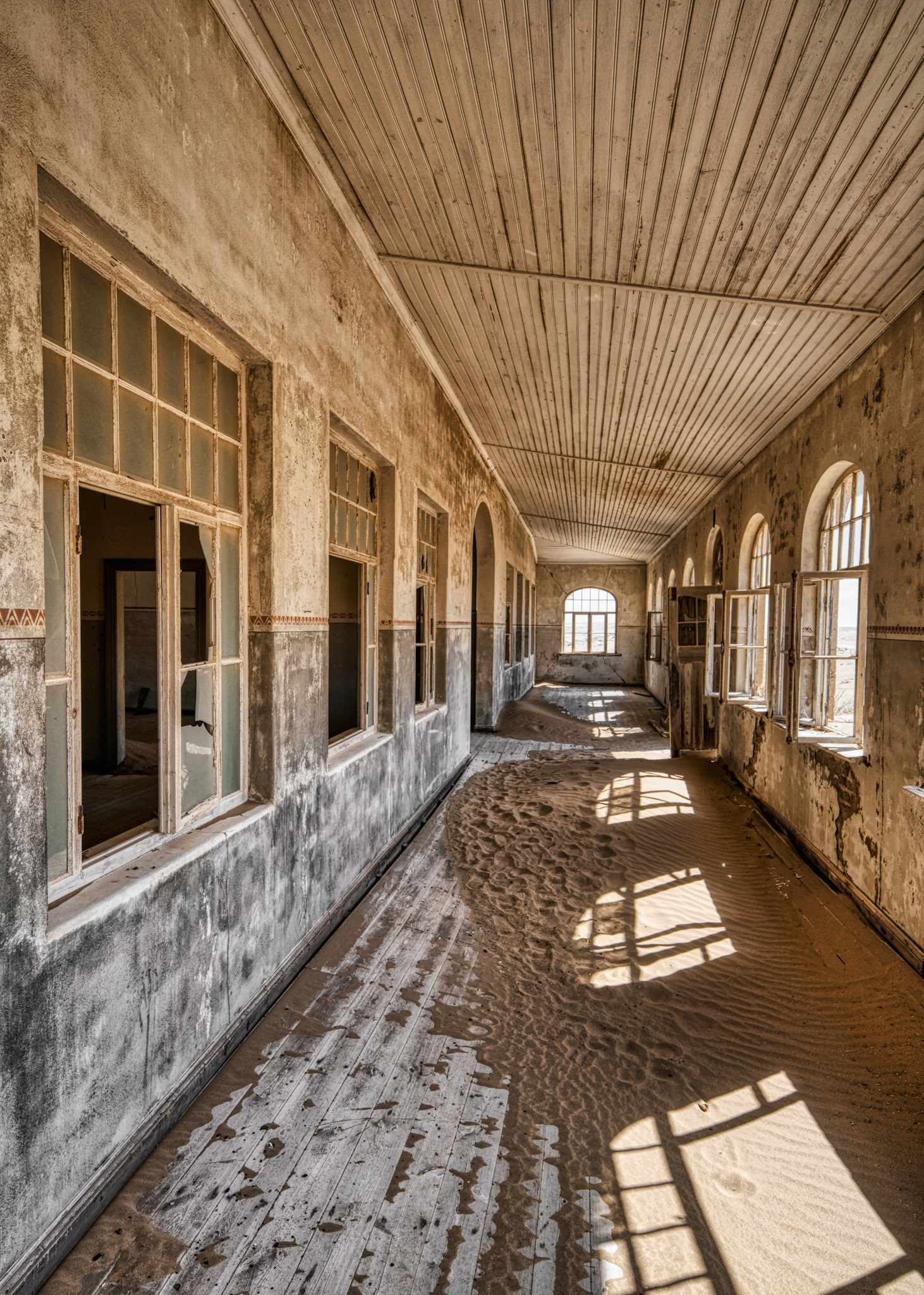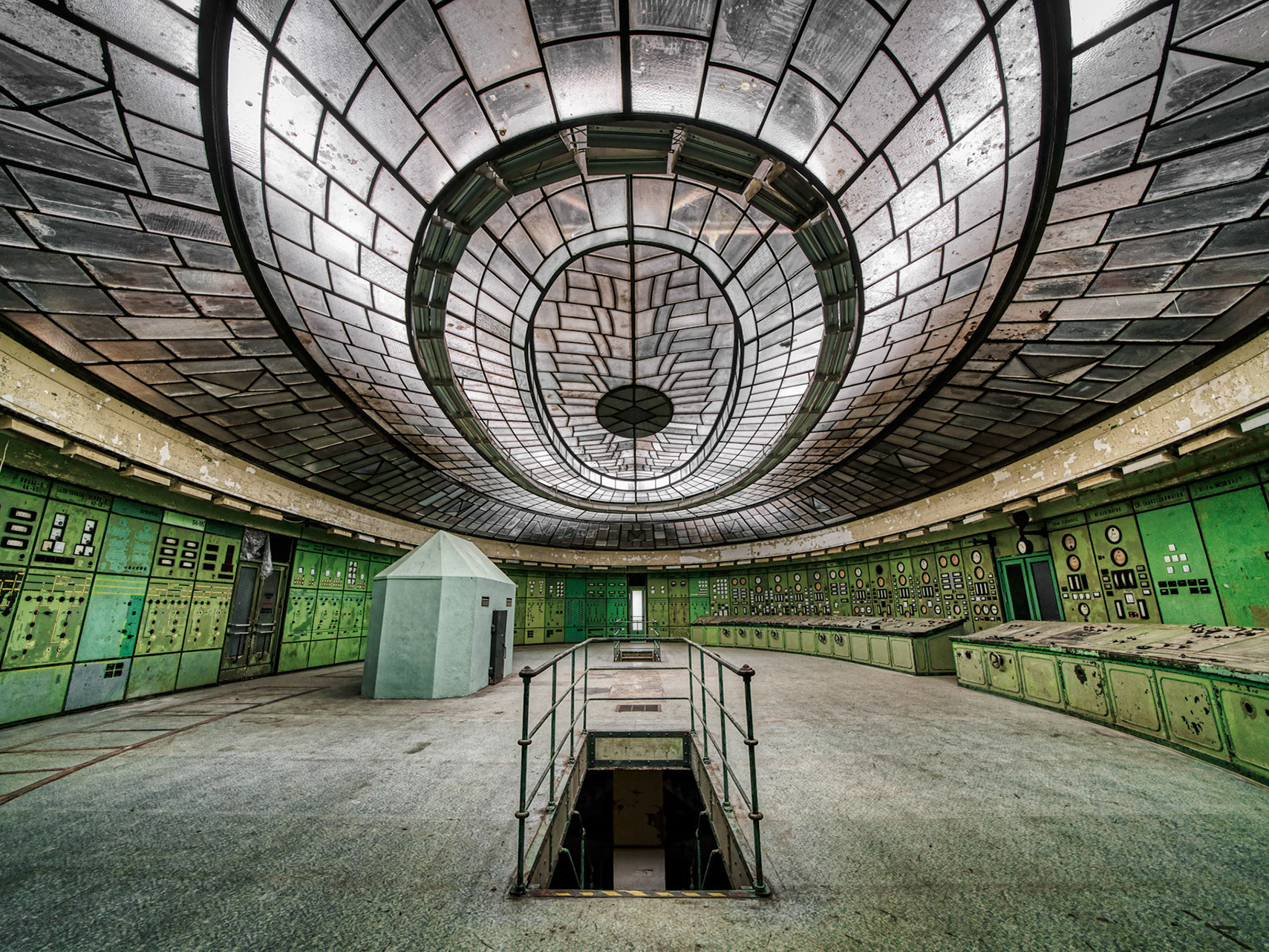Once one of the richest communities in Africa, the buildings of Kolmanskop have now been reclaimed by the Namib Desert...
Brightly colored wallpaper peeling off the walls, dilapidated houses now inundated in rolling banks of sand … this is Kolmanskop, a ghost town in southern Africa’s Namib Desert, in the middle of a region known as “the forbidden zone.”
One evening in 1908, a Namibian railway worker was shovelling railroad tracks clear of creeping sand dunes when he saw some stones shining in the low light: diamonds. Soon, hordes of prospectors descended on the area. By 1912, a town had sprung up, producing a million carats a year, or 11.7 percent of the world’s total diamond production. Kolmanskop’s prospectors were becoming rich overnight simply picking diamonds off the desert floor,
But it wasn’t to last. Intensive mining depleted the area by the 1930s, and in 1928, the town’s fate was sealed when the richest diamond fields ever known were found on the beach terraces to the south. The townspeople left in droves, abandoning homes and possessions.
By 1956, Kolmanskop was completely abandoned. The dunes that once rolled over the railway tracks now burst through the ghost town’s doors and porches, filling its rooms with smooth banks of sand.

























